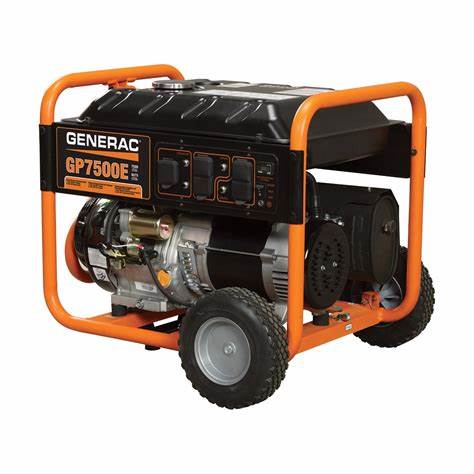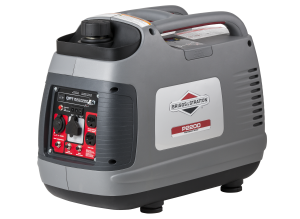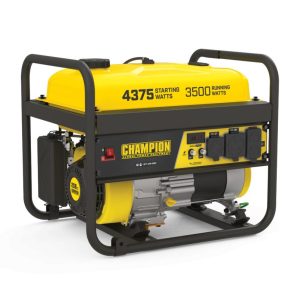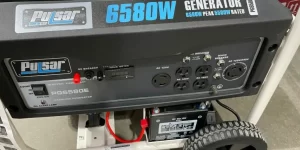5 Gas Leaks in the Generator (How to Stop the Leak)
Your generator is leaking gas, but you can’t pinpoint the source. If the gas has already evaporated into the air, leaving no wet marks to indicate a breach, it can be difficult to locate the source of the leak.
An exhausted carburetor bowl gasket or a blocked float might cause gas to escape from the generator. The fuel filter, fuel lines, fuel tank, or fuel shut-off valve could all be sources of fuel loss.
Always make sure there is plenty of airflow around you when you’re working. It’s best to wait until the generator has cooled down before attempting any repairs.

Before diagnosing, repairing, or operating, be sure you’ve read and understood all of the safety recommendations in the equipment’s operator’s manual.
If you are unsure of how to proceed, lack the necessary expertise, or are unable to execute the repair properly, you should seek the advice of a professional.
Table of Contents
A Generator May Start Leaking Gas Here
Carburetor of Your Generator
Generators often start leaking near the carburetor. After leaving the gasoline tank, some fuel is temporarily stored here.
Varnish formed from gas sitting in the carburetor can cause its small pieces to stick, rendering the carburetor unable to control the flow of gasoline. The result could be an overflow.
The carburetor bowl gasket may fail, leading to a leak, or the internal parts may stop functioning properly.
A blown gasket in the carburetor bowl of the generator
Check for fuel seeping around the carburetor just above the bowl. The carburetor and the bowl are sealed with a thin gasket, which can wear out and cause leaks. A leak in the seal will allow gas to escape.
This gasket often gets hard and brittle with time. The gasket gets hot when the engine is running and cold when it is not because of its proximity to the engine.
The gasket’s sealing ability deteriorated as a result of the repeated stresses of heating and cooling. If you notice a leak here, it’s time to replace the gasket in the carburetor bowl.
Repairing a leaking carburetor bowl gasket entails the following procedures:
- Use the fuel shut-off valve to stop the fuel flow. In the event that your generator doesn’t have a fuel valve, you can crimp the fuel line with a pair of pinch pliers to halt the flow.
- Before removing the bowl, make sure the carburetor’s exterior is clean so that debris doesn’t get sucked into the engine.
- To gather any leftover fuel from the bowl, have a rag or small container on hand.
- You can perhaps remove the gasoline bowl from the carburetor by using a screw on the side of the bowl. If yours does, you can fix it by unscrewing the gasoline drain plug, letting the gas drain into a container, and then reinstalling the screw. If it does not, then move on to the following section.
- Take out the screw and take out the bowl from the carburetor.
- The old gasket must be pried off and the new one installed.
- Put the carburetor bowl back in place.
- Replace the bowl’s screw with the one that secures the carburetor.
- If there was any fuel spillage, clean the carburetor once more.
- Start the engine with the fuel pump running to make sure the carburetor isn’t leaking any more.
Carburetor float jammed in generator
Locate the air intake port next and check for fuel leaks. A leak here could indicate a float that has become trapped and is no longer able to control the amount of fuel entering the bowl.
When the float in your carburetor gets stuck, fuel keeps pouring into the bowl and eventually spills out.
If you discover a stuck float in your carburetor, you’ll need to take it apart to figure out why the float is stuck. The float may not stick if you maintain the carburetor clean.
The carburetor may need to be rebuilt or replaced before it can function properly.
Generator carburetor with a stuck float needle
The float needle in your carburetor should be the final item you inspect. To maintain fuel flow into the carburetor bowl, the float needle coordinates with the float. It’s going to be necessary to fix the needle if it gets jammed.
You can either disassemble the carburetor yourself to replace the float, or take it to a small engine specialist.
Your Generator’s Fuel Filter Is Broken or Soaked
The fuel filter, which prevents debris and other impurities from entering the generator’s fuel system, is often located at the bottom of the fuel tank.
Nonetheless, some power plants install a plastic inline filter in the fuel supply. The plastic in a filter may break or deteriorate with time, causing it to leak. Invest in a new fuel filter immediately.
Failure of the Generator’s Fuel Tank
The fuel tank on your generator could be made of metal or HDPE. Both types can spring leaks with time.
Polyethylene tanks are susceptible to fuel leaks due to faulty seams. Corrosion and rust patches caused by fuel lying in a metal tank might lead to a hole.
If you discover a leak in the fuel tank, you should get a new one as soon as possible.
However, you might not have this choice if your vehicle has a metal tank and is an older model that is no longer produced. Fixing the hole is an option.
Your Generator’s Shut-Off Valve Is Broken
Your generator’s fuel shut-off valve needs checking. This could be the location of the leak in your generator. When a leak is discovered in a shut-off valve, it must be replaced.
Sometimes a sediment bowl and seal might be found in the fuel shutoff valve. If there is leaking around the bowl, take it apart, clean it, and reseal it, if possible. If this is not the case, you should replace the entire valve.
Replace the gasoline shutoff valve if it is faulty.
Generator’s Fuel Lines
Dry and cracked fuel lines are a common problem. Replacement gasoline lines are required if any cracks are discovered in the existing lines. Dry and old lines should be replaced before they start leaking.
Check the hose’s connection to the fuel components to make sure there is no fuel seepage and to make sure it is properly attached to the fuel lines (which you should inspect for age and quality). The clamps might need to be changed.







